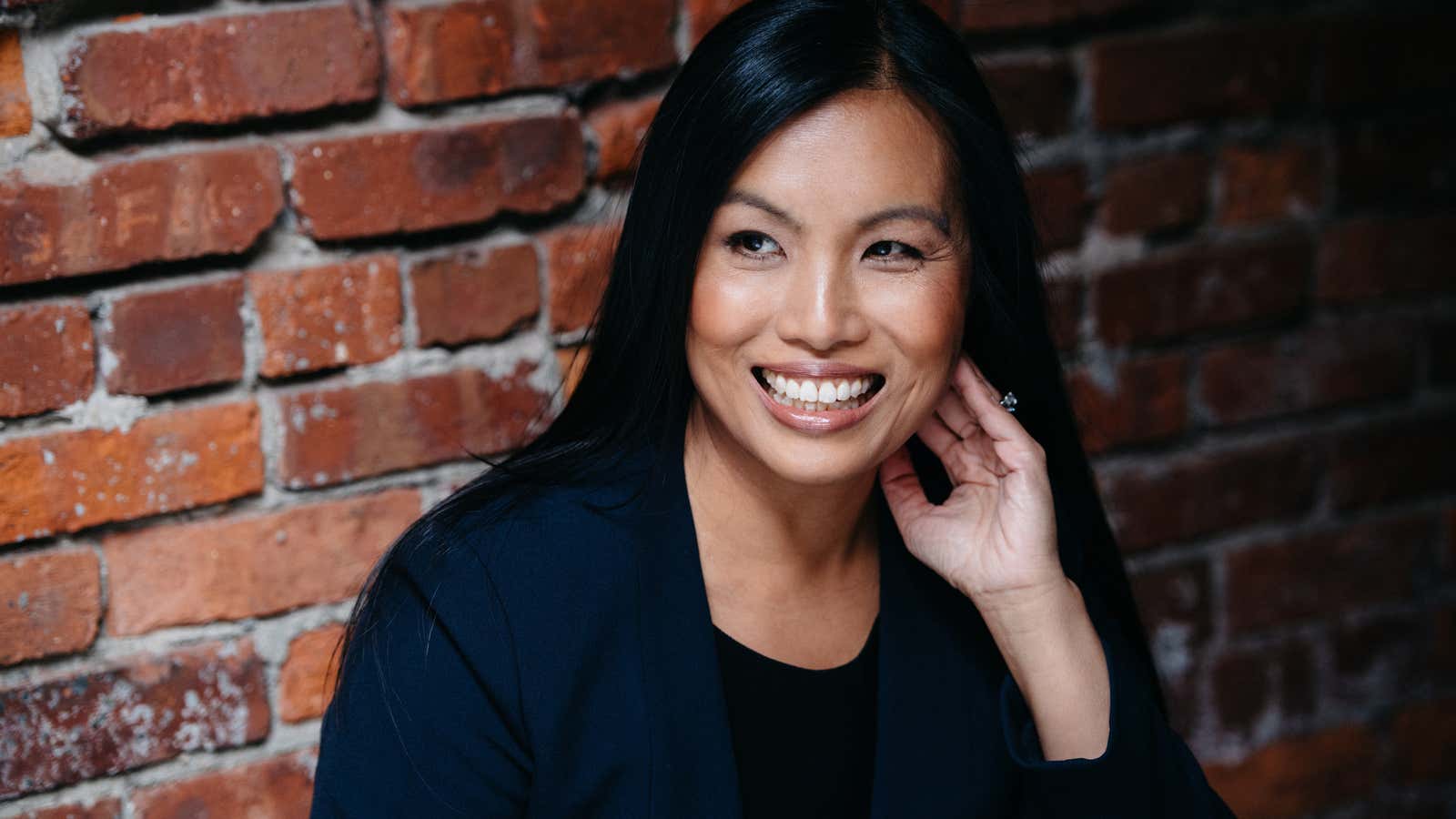It’s no one person’s job to make sure inclusion happens. But there’s no denying that people like CEOs and board members can do more to increase the number of women and minorities in positions of power—and ensure that their voices are welcome.
Executives are certainly talking the talk, with 78% of CEOs at US companies saying gender diversity is a top priority (pdf), and some are even starting to walk the walk, publicly committing to diversity efforts or starting programs to that end. But diversity isn’t where the efforts should end, argues Maggie Chan Jones, the founder and CEO of Tenshey, which offers executive coaching in an effort to increase the gender diversity in companies’ most powerful positions.
Chan Jones, a former Microsoft senior manager and SAP chief marketing officer who spent two decades in the notoriously male-dominated tech industry, says companies need to move past efforts to simply get a few token people of color and women in the room. They need to be including them.
Inclusion, she says, is the difference between tokenism and true equality. It is not just simply being in the meeting; it’s having your input valued and respected. (Or, as others have written, diversity is being invited to a party; inclusion is being asked to dance.)
That’s not to say diversity itself isn’t important—after all, you have to be in the room in order to offer your opinions. But diversity is just a first step in the long road toward equality. “Companies are looking for that diversity,” Chan Jones says. “[T]he inclusiveness,” she adds, “is a work in progress.”
It’s fair to wonder what’s taking so long. Companies already know that inclusion, like diversity, is a good business decision. “All these different companies are trying to reach their consumers and target audience,” Chan Jones says. “More than 80% of consumer spending is influenced by women. At the leadership table, at the board of directors’ table, you need to have that representation for people you’re selling to.”
New laws might help hasten the process. Last October, California passed a law requiring all public companies headquartered there to include at least one woman on their boards by 2019, and at least two or three women (depending on the size of the board) by 2021. The UK passed a similar law in 2016, mandating that women make up a third of board members in publicly held companies by 2020.
Chan Jones thinks plans like these could be the first step toward genuine, widespread inclusion, not just diversity. “For any type of minority group to feel like their voices are really being heard, they need to be a critical mass. That means you have to have at least 30% women in the C-suite and on the board. Same thing when it comes to people of color,” Chan Jones says.
A critical mass means that people in the minority feel confident enough to speak up, to know that others like them have their back. “Inclusion is an art and science—you can’t feel or touch it, but you know is there. If I have two other women in the room, it adds so much confidence,” Chan Jones says. At conferences, for example, she finds herself much more likely to walk toward a group of women than a group of men. “You feel closer to them, in a way you feel like there’s a belonging there,” she says.
To that end, Chan Jones thinks the new California mandates could yield some interesting results.
“In so many studies and reports, a CEO says how important it is to have gender diversity on board, but the numbers are still basically about the same. If you keep trying the same thing over and over, you will not get a different result—we need to do something completely different,” Chan Jones says. “I applaud California for getting companies to rethink their strategy. But it’s yet to be seen on how well this is going to work. We are still very much in the early stage.”
Part of the challenge will be moving companies past the minimum requirements to comply and into a pattern of genuine inclusion.
“It is really an evolution,” Chan Jones says. “At the beginning you have one or two women, and over time it gets more balanced. That’s where inclusion truly happens. When all voices are heard, that’s when you can truly harness the power of your talents.”
This story is part of How We’ll Win in 2019, a year-long exploration of the fight for gender equality. Read more stories here.
